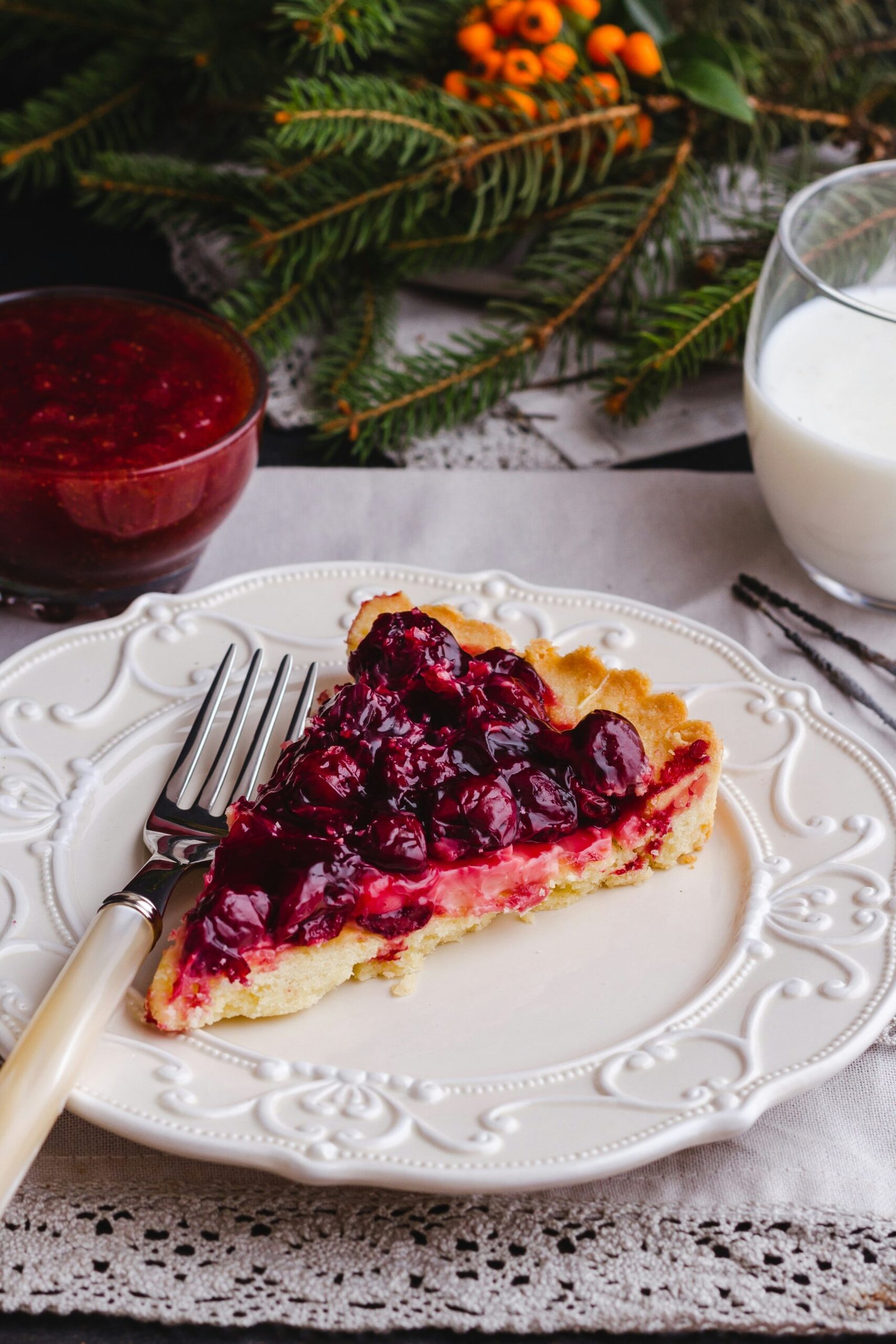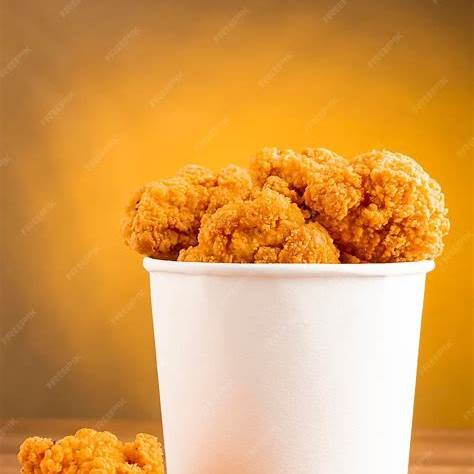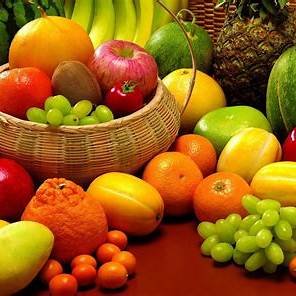Introduction to Baking Desserts
Baking desserts is an enchanting realm within the culinary arts that evokes a sense of creativity and satisfaction. It encompasses a diverse array of sweet offerings, from sumptuous cakes and delightful cupcakes to delectable cookies. Each type of dessert carries its own unique characteristics and allure, appealing to a wide range of tastes and occasions. The experience of creating these sweet treats is not merely about the final product; it is an enjoyable journey that fosters a connection between the baker and the culinary world.
In daily life, desserts are a source of joy, celebration, and comfort. They play a pivotal role in marking milestones, from birthdays to anniversaries, and even simple family gatherings. The act of baking not only provides an opportunity to indulge in delicious flavors but also allows individuals to express their creativity. Whether it’s through the selection of ingredients or the decoration of cakes, bakers can infuse their personality into each creation, making every dessert a reflection of their unique style.
The variety of desserts available offers something for everyone. Cakes can be layered or fluffy, rich or light, making them suitable for all types of celebrations. Cupcakes, meanwhile, deliver the same deliciousness in individual portions, perfect for sharing or as a personal treat. Cookies are renowned for their delightful crunch and chewiness, offering endless variations to suit different palates. This flexibility within the world of desserts encourages bakers to explore new recipes and techniques, enhancing their skills and understanding of baking.
Engaging in baking desserts can also serve as a therapeutic outlet, providing a sense of accomplishment and joy in the creation process. From measuring ingredients to the delightful aroma that fills the kitchen, each step invites an appreciation for the art of baking. Thus, the sweet art of baking becomes not only a means of satisfying a craving but also a rewarding experience for both the baker and those who partake in these delightful creations.
Essential Baking Ingredients
Baking is an intricate art that relies on the harmonious combination of various ingredients to achieve the perfect dessert, cake, cupcake, or cookie. Understanding the role of each essential ingredient is critical for any baker seeking to create delightful baked goods. The primary components include flour, sugar, eggs, butter, and leavening agents.
Flour serves as the foundation for most baked products. It provides structure and stability, with all-purpose flour being the most commonly used type. However, different flours, such as cake flour and bread flour, can yield distinct textures and results. Cake flour, for instance, has a lower protein content, ideal for creating tender cakes, while bread flour, with its higher protein content, is best suited for yeast-based products.
Sugar not only sweetens but also contributes to the moisture and browning of baked items. Granulated sugar is versatile, while brown sugar imparts a rich flavor and added moisture. The choice of sugar can significantly influence the final taste and texture of desserts, meaning attention to detail in this area is paramount. Eggs serve multiple purposes as they provide structure, moisture, and richness. They also play a vital role in emulsifying fat and leavening, which can help achieve a light and airy consistency in cakes and cupcakes.
Butter is another critical ingredient that enriches flavor and adds moisture, making it a favorite among bakers. Its quality can affect the overall taste of the final product, with unsalted butter being preferred to allow for better control over salt content. Finally, leavening agents, including baking powder and baking soda, create the necessary lift in baked goods by producing gas when mixed with moisture and acid. Selecting the appropriate leavening agent based on the specific recipe is essential to achieve the desired rise.
Baking Equipment You Should Own
To embark on the delightful journey of baking, having the right equipment is essential. The first item on your checklist should be a set of sturdy mixing bowls; these will be the foundation for combining ingredients. Opt for various sizes made from materials like glass or stainless steel, which are durable and easy to clean.
Next, measuring cups and spoons are vital for ensuring accuracy in your recipes. Both dry and liquid measures are necessary, as precise measurements are integral to achieving the desired textures and flavors in cakes, cookies, and other desserts. The use of a kitchen scale is also recommended for an even more accurate measurement, especially for baking ingredients that require precision.
A quality hand mixer or stand mixer can drastically reduce the time and effort in combining ingredients. When making whipped cream or meringues, these mixers will ensure that you achieve the perfect consistency. Additionally, a set of spatulas, including rubber and silicone varieties, will assist you in scraping bowls and folding in ingredients without leaving any behind.
Ovens are arguably the most critical baking equipment. It is important to ensure your oven is well-calibrated for even baking. A good baking thermometer can assist in verifying the internal temperature, which can prevent inconsistency in results. Invest in various baking pans, such as round cake pans, baking sheets, and muffin tins, as each plays a crucial role in shaping your creations.
Lastly, don’t overlook tools like parchment paper, silicone mats, and cooling racks. Parchment protects your baking pans, ensuring easy release of finished goods, while cooling racks are necessary to allow airflow around baked items, aiding in achieving the right texture. These essential tools will support you in mastering the art of baking and will be an investment for countless delicious desserts to come.
Techniques for Perfect Cakes
Mastering the art of cake baking involves a combination of meticulous techniques and an understanding of the science behind the ingredients. To begin with, proper mixing is crucial to achieving the right texture. Start by creaming butter and sugar together until the mixture is light and fluffy. This process incorporates air into the batter, which plays a significant role in the cake’s rise. Once the wet ingredients have been combined, gradually add the dry ingredients, taking care to avoid over-mixing. Over-mixing can lead to a dense cake, which is not the desired outcome.
When it comes to baking, preheating the oven to the right temperature is essential. For most cakes, 350°F (175°C) is recommended. However, always consult your specific recipe for accurate guidance. Preparing your cake pans is another critical step; greasing and lining them with parchment paper will ensure that your cake releases easily after baking. After placing the batter in the pans, it is beneficial to tap them gently on the countertop to release any air bubbles that may have formed.
Cooling is a step that cannot be overlooked. It is advisable to allow the cakes to cool in their pans for about 10-15 minutes before transferring them to a wire rack. This helps maintain the cake’s shape and texture. Once completely cooled, icing becomes a focal part of cake decoration. Applying a crumb coat—a thin layer of frosting—helps to lock in any loose crumbs and provides a smooth base for the final layer. For a more visually appealing cake, consider using various decorating techniques such as piping, fondant covering, or adding edible embellishments like fresh fruit or chocolate shards.
By mastering these baking techniques, one can elevate a simple cake to a stunning masterpiece that is both visually appealing and delicious. Patience and practice are key; the more you bake, the more skillful you will become in creating perfect cakes.
Creating Irresistible Cupcakes
Cupcakes, often celebrated for their delightful miniature size and versatility, have captured the hearts of dessert enthusiasts worldwide. The fundamental element of a cupcake is its batter, which is typically made from a combination of flour, sugar, eggs, and a leavening agent. It is essential to achieve the perfect consistency; too thick and the cupcakes may become dense, too thin and they may overflow during baking. A well-mixed batter ensures that the cupcakes rise beautifully, delivering that sought-after light and airy texture.
Baking techniques play a crucial role in the overall success of the cupcake-making process. Preheating the oven is vital, as it helps cupcakes bake evenly and develop a golden crust. Utilizing the proper bakeware is equally important; consider using silicone or paper liners for easy cleanup and stylish presentation. Cupcakes are generally baked at a moderate temperature, usually around 350°F (175°C), allowing them to puff up without burning. To ensure optimal results, closely monitor the baking time and perform the toothpick test for doneness.
When it comes to flavor variations, creativity knows no bounds. Classic vanilla and chocolate are forever beloved, but expanding the flavor profile with options like lemon zest, almond extract, or spices can create exciting new tastes. Incorporating fillings, such as fruit preserves or chocolate ganache, adds an unexpected surprise and enhances the overall cupcake experience. Moreover, decorative frosting styles have evolved to include swirls, rosettes, and intricate piping techniques, allowing bakers to express their artistic flair. Toppings such as sprinkles, fresh fruits, or edible flowers can elevate the visual appeal and taste of cupcakes, making them suitable for any occasion, from birthday parties to formal gatherings. A well-crafted cupcake not only satisfies the sweet tooth but also provides a delightful visual treat.
The Joy of Baking Cookies
Baking cookies is an art cherished by many, offering a delightful blend of creativity and sensory pleasure. From the classic chocolate chip to more intricate designs, cookies come in an array of types that can satisfy diverse palates. Each cookie variety has its charm, with basic recipes providing a foundation upon which bakers can explore flavors, textures, and presentations.
At the heart of cookie baking lies the mixing method. The general approach requires creaming butter and sugar together, allowing air to incorporate, resulting in a light and fluffy mixture. This step not only influences the cookie’s texture but also its flavor. Homemade cookies can be enriched with various ingredients, such as nuts, dried fruits, or even flavored extracts, enhancing their appeal while encouraging personalization. For instance, adding a pinch of sea salt to a chocolate chip cookie can elevate its taste profile, creating a perfect balance between sweet and savory.
When it comes to baking cookies, temperature and time are crucial factors. Preheating the oven ensures an even baking environment, preventing cookies from spreading too much or remaining undercooked. Utilizing parchment paper can also contribute to the ease of cookie removal and ensure uniformity in baking. Additionally, cooling baked cookies on a wire rack allows them to maintain their desired texture, whether soft or crisp.
Variations on cookie recipes are endless. From gluten-free options to vegan substitutes, it is possible to cater to different dietary preferences without sacrificing taste. Experimentation with spices or adding citrus zest can introduce exciting flavor profiles, making cookies more adaptable to individual tastes and occasions. This versatility not only highlights the joy of baking cookies but also encourages bakers to embrace their creativity and develop unique recipes that can delight family and friends.
Decorating Tips for Desserts
Decorating desserts is an essential part of the baking process that greatly enhances their visual appeal and can transform a simple treat into a stunning masterpiece. Whether you are working on cakes, cupcakes, or cookies, there are several decorating techniques that can elevate your creations to new heights. One of the most fundamental elements in dessert decoration is frosting. Various types of frosting, such as buttercream, cream cheese, or ganache, can be used to create a smooth, glossy finish or a textured look. For cakes, a spatula or bench scraper can help achieve clean edges, while cupcakes can be adorned with a swirl of frosting using a piping bag fitted with different tips for varied designs.
Another popular technique in dessert decoration is the use of fondant. Fondant allows for a sleeker appearance and can be molded into shapes, making it ideal for themed cakes and intricate designs. If using fondant, it is crucial to properly prepare the surface of the cake to prevent cracking and ensure smooth coverage. Additionally, edible decorations such as edible glitter, sprinkles, and candied fruits can lend texture and color, providing a festive touch to your desserts.
Piping is a versatile technique that can range from simple to complex designs. Mastering basic piping skills can enable the creation of elegant borders, flowers, and other intricate patterns. Utilize various piping tips to achieve distinctive looks, and practice makes perfect when it comes to precision and control. Remember to let your creativity shine while decorating; experimenting with colors and textures can lead to unique creations. Overall, mastering these decorating techniques will allow bakers to present visually appealing desserts that are sure to impress at any gathering, making every occasion a sweet celebration.
Common Baking Mistakes and How to Avoid Them
Baking, while immensely rewarding, can pose several challenges for novice bakers. Understanding common baking mistakes, as well as how to prevent them, is essential to achieving the desired results. One prevalent issue is overmixing. This often occurs when combining wet and dry ingredients, which can lead to a dense or tough texture in cakes and muffins. To avoid this, mix just until the ingredients are incorporated. A few lumps in the batter are acceptable and may even enhance the final product’s texture.
Another frequent baking error is uneven baking. This can result from improper oven calibration or inadequate positioning of baking trays. Ovens can have hot spots, which often leads to certain areas cooking faster than others. To ensure even baking, it is recommended to rotate your baking sheets halfway through the baking time. Additionally, placing your trays in the center of the oven can promote uniform heat distribution.
Ingredient substitution is another area where novice bakers may encounter difficulties. While substitutions can sometimes be necessary, they may lead to unwanted flavors or textures. For instance, swapping baking powder for baking soda without adjusting the quantity can affect the leavening process, leading to flat or dense baked goods. It is best to follow recipes closely, especially when one is still developing their baking skills. If substitutions are necessary, understanding the properties of the original ingredients can help maintain the integrity of the recipe.
Lastly, not reading the recipe thoroughly before starting can lead to missteps in the baking process. Ensure that you are aware of all instructions and preparation steps. Taking the time to familiarize oneself with the recipe can prevent common baking mistakes, ultimately leading to more delightful outcomes in your baking endeavors.
Conclusion: The Joy of Baking at Home
Baking is not merely a culinary activity; it is an experience that nurtures creativity and fosters connections with loved ones. Throughout this blog, we have explored various facets of baking, from mastering the art of crafting perfect cakes to the delicate balance required for cupcakes and cookies. Each dessert carries with it the potential for joy, not only for the baker but also for those who indulge in the final product. The process of mixing, measuring, and pouring culminates in delightful treats that can brighten up any gathering.
The satisfaction derived from baking at home is multifaceted. It allows individuals to experiment and innovate, honing skills that yield delicious outcomes. Home baking offers the chance to tailor recipes to personal preferences and dietary needs, ensuring that every creation is not only good but also meaningful. As bakers discover new techniques and experiment with flavors, they embark on a journey that can transform a simple recipe into a cherished tradition.
Moreover, sharing baked goods with family and friends creates bonds and sparks joy in communal settings. There is a unique delight in presenting a homemade dessert, often met with appreciation and gratitude. Such experiences can foster a deeper connection among individuals, as flavors and memories intermingle. Encouraging readers to take to their kitchens and whip up their favorite desserts will not only bring personal satisfaction but also strengthen relationships as creations are shared.
Ultimately, the joy of baking transcends the act itself; it intertwines with the emotions and experiences of those involved. As this blog demonstrates, the sweet art of baking at home can be a wonderful avenue for expressing love, creativity, and community. So, gather your ingredients, unleash your inner baker, and share your sweet creations—your kitchen awaits a symphony of flavors and joy.



